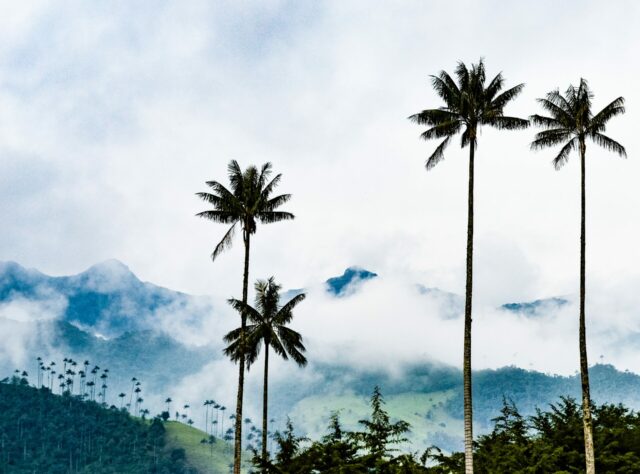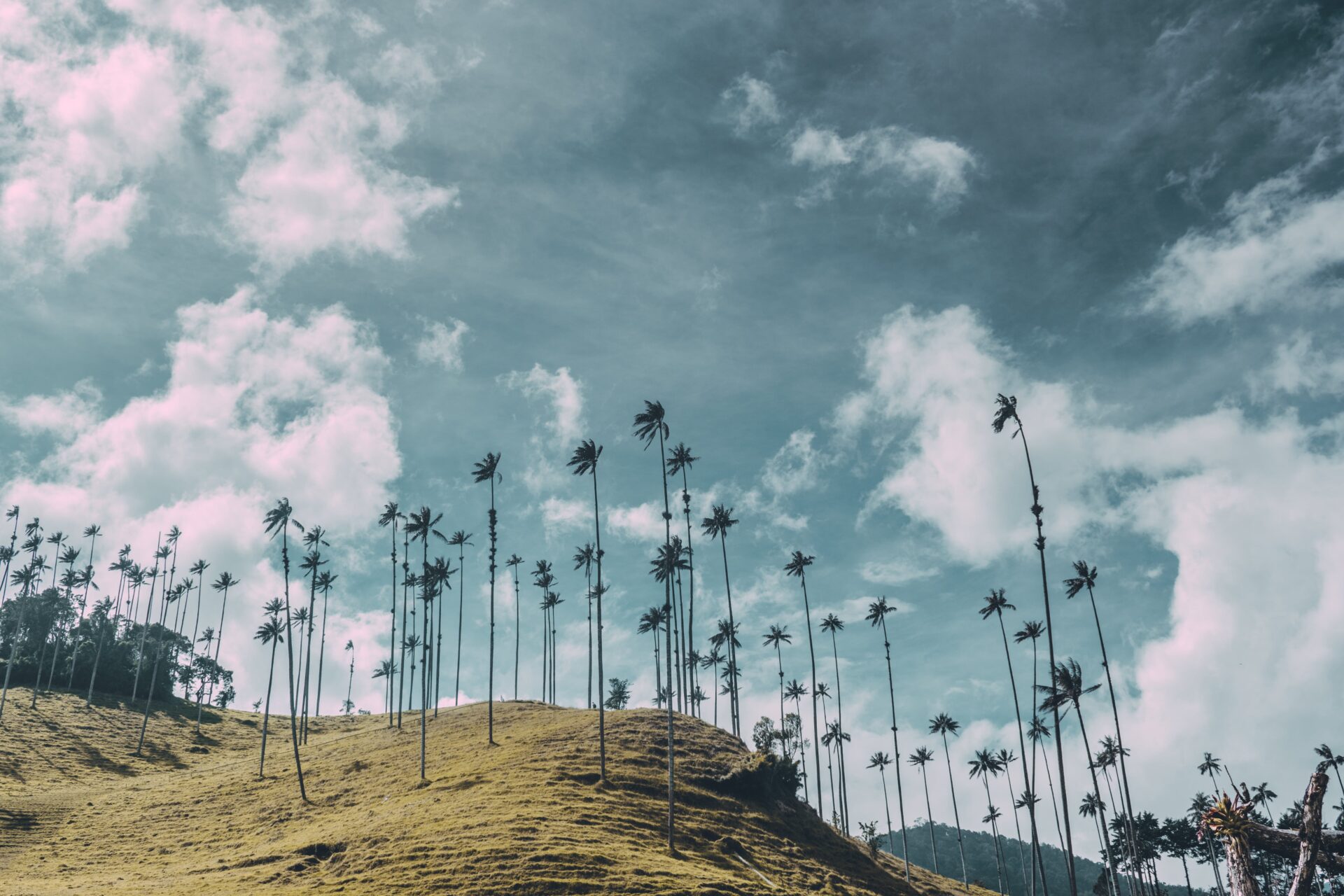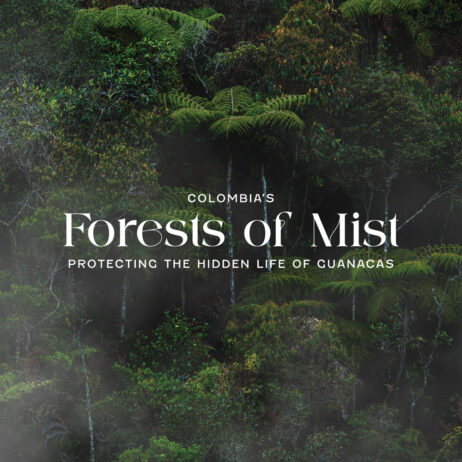
18th Century explorer Alexander von Humbolt desribed the vista of Quindío Wax Palms as “a forest above a forest, where the tall and slender palms pierce the leafy veil around them.” Credit: Saul Mercado
One of the most striking species we protect in our autumn appeal: Colombia’s Forests of Mist, is the Quindío Wax Palm (Ceroxylon quindiuense). Described by 18th Century explorer Alexander von Humboldt as: “the most mesmerising of all the new wonders”, these trees have fascinated botanist and explorers for centuries.
These palms, so iconic to the landscape that they are Colombia’s national tree, have a lifespan of 200 years, and are a symbol of the capacity to persist and last. With their astonishing height reaching up to 60 metres, they tower above the cloud forest canopy of the Guanacas Reserve, a protected area in the mountains of Colombia’s Antioquia region. However, despite their ecological and cultural significance, Quindío Wax Palms are a Vulnerable species under constant threat from exploitation and habitat loss. With your support, WLT and our partner, Fundación Guanacas Bosques de Niebla, can protect these magnificent trees and help them remain an integral part of the Colombian landscape.
With dense, evergreen crowns and their namesake wax covering thick, marbled trunks, Quindío Wax Palms grow at elevations between 2,000 and 3,100 metres above sea level. Palm trees are usually most at home on warm, sandy beaches and desert springs, so why is it that this Palm species is endemic to the cool, moist sphere of Colombia’s montane cloud forests? The answer lies over 12 million years ago, when the colossal peaks of the Andes we know today rose from flat, rocky plains. Where other palm species disappeared as the mountains grew, the hardy Wax Palms were able to adapt to the new environment and have thrived there ever since.

The Quindío Wax Palms tower above the cloud forest canopy, reaching heights of 60 metres and living up to 200 years. Credit: Andrea Ferreira
Known as an ‘umbrella species’- the Quindío Wax Palm’s conservation is essential to the survival of countless rare and threatened species that find refuge in the Guanacas Reserve, as well as the health of the entire ecosystem. The fruit of the Wax Palms, hanging as clusters of bright red berries, is an extraordinary food source for fauna, as each tree can produce an incredible 24,000 fruits each year. Their heavy, lush foliage provides shelter for an abundance of tropical bird species such as Parrots, Macaws and Toucans, who also swallow the berries whole and disperse the seeds far and wide. As for their pollinators, the small, pungent white flowers that adorn the Wax Palms leaves each spring provide not only nectar and pollen for thousands of tiny Mystrops beetles, but also refuge to lay and hatch their eggs.
The Quindío Wax Palms have been intwined in Colombian culture for generations. However, cultural uses have also contributed to the decimation of Wax Palms in recent decades. Many traditional mountain homes stand with beams cut from their timber and roofs thatched with their leaves, illuminated by candles fashioned from their wax. Until recently, the leaves of young trees were also extensively harvested for Catholic celebrations of Palm Sunday, often resulting in fatal damage.

Without the shelter of the cloud forest, Wax Palm saplings dry out and die in the direct sunlight. Once these ageing trees are gone, there will be no more unless the forest is restored. Credit: Sebastián Vargas
Though such damaging practices have been limited, protecting this species alone is not enough to ensure its survival. This is because, in the 50 years it takes for the seedlings to become mature trees, they are dependent on the shadow provided by the surrounding cloud forest. Many remaining Wax Palms exist only as lonely islands in fields cleared for pasture. Though still standing, these populations are geriatric and dying, and, without the protection of the cloud forests, the seedlings are crushed by livestock, and the saplings grazed or dried out in the direct sunlight. With only 5-10% of Colombia’s cloud forest habitat remaining, protecting and restoring fragments, such as those within the Guanacas Reserve, is one of the most promising conservation strategies for this remarkable species.
By donating to our autumn appeal, you can help Fundación Guanacas protect Quindío Wax Palms and their habitat, preserving their importance to wildlife and people for years to come.
